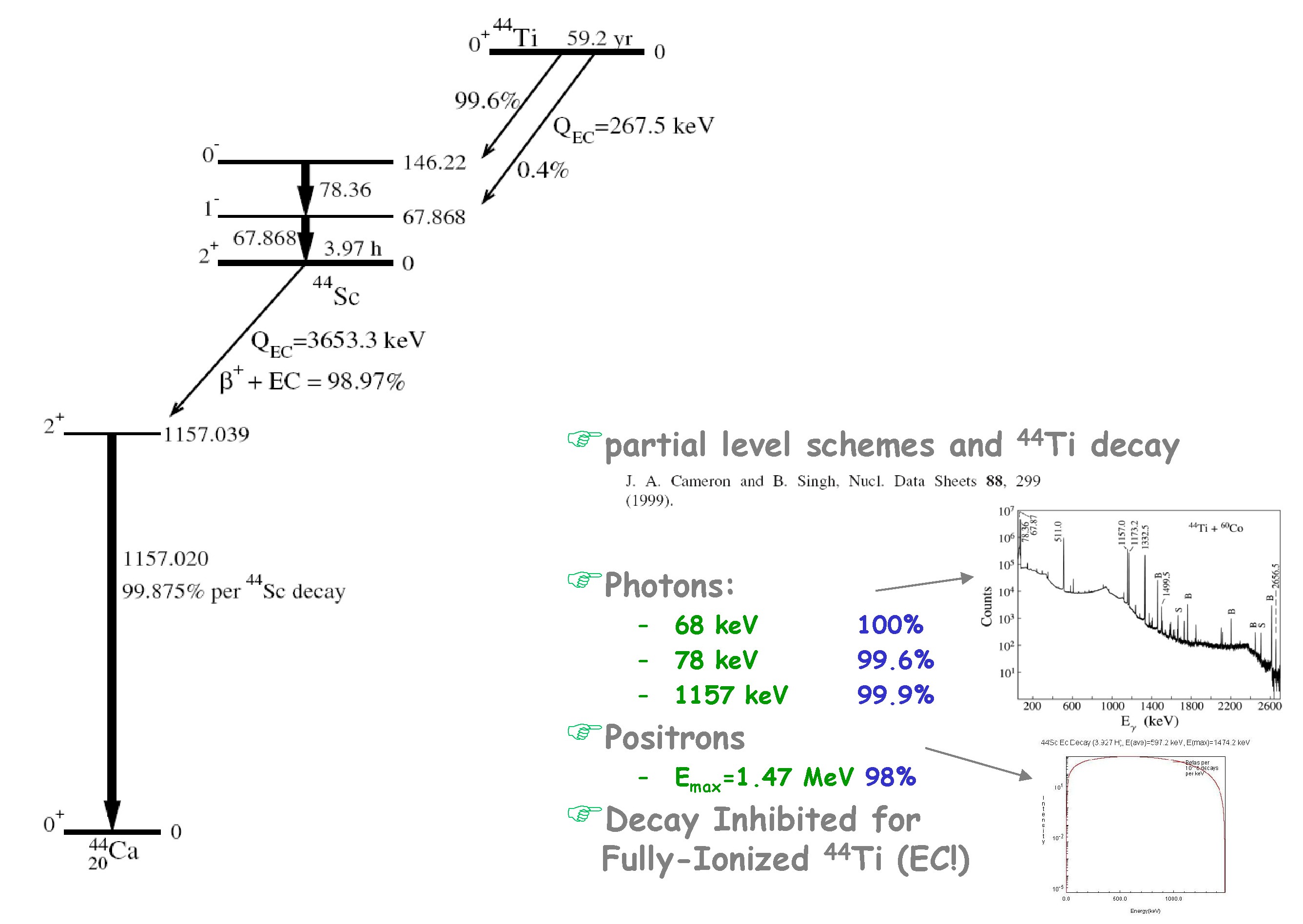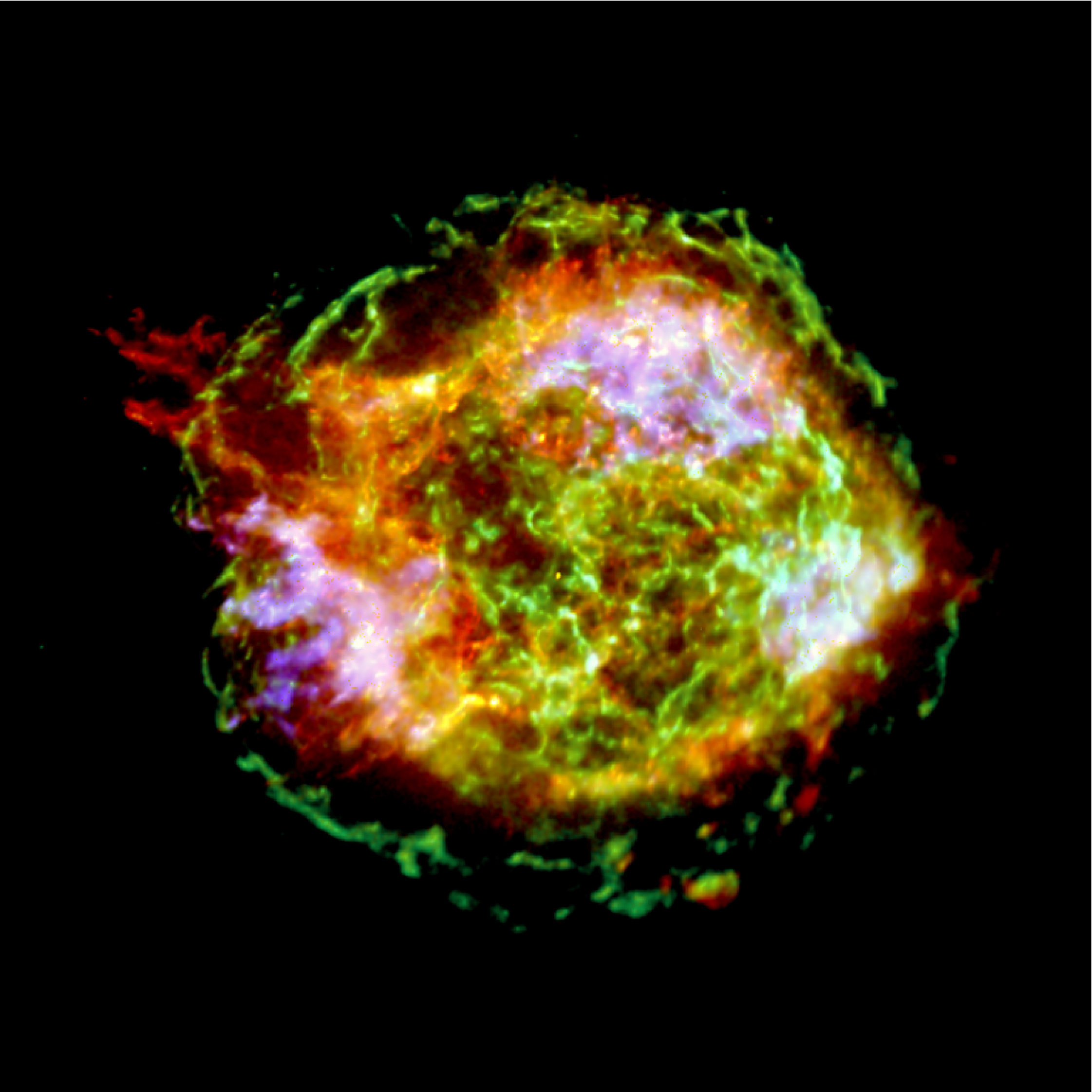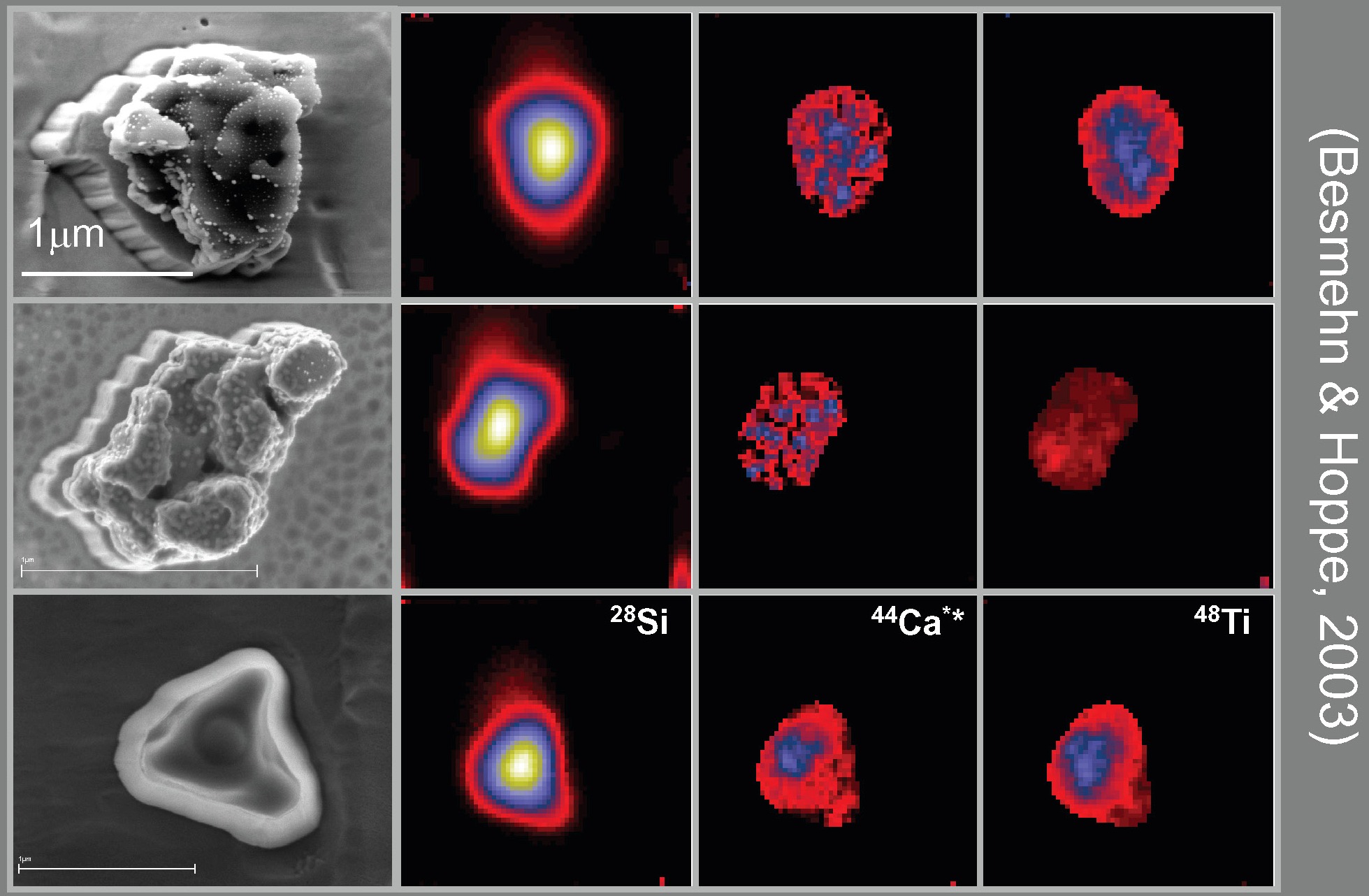The Origin of 44 Ti
44Ti is an isotope
which is
unstable, with a half-life of 59 years. It decays into the 44Ca
isotope, which is a 2% admixture to elemental Calcium. This decay, and
hence 44Ti nucleo-synthesis, is believed to be the dominant, if not
only, production channel for 44Ca; therefore, investigation of cosmic
44Ti may reveal how cosmic Calcium is produced. From nuclear astrophysics, we expect synthesis of 44Ti through explosive Oxygen burning and/or alpha-rich freeze-out from Silicon burning. Both occur in massive stars and their supernovae, and the alpha-rich freeze out from Si burning would occur deep inside the supernova in a region where also 56Ni is synthesized, very near the 'mass cut' (separation between compact remnant star and supernova ejecta). 56Ni is the radioactive isotope which makes supernovae shine so brightly, it decays into 56Fe. 44Ti has been seen to decay inside the 350-year old Cas A supernova remnant, and in dust grains attributed to supernova dust and found inside meteorites. We believe that many, if not all, core-collapse supernovae produce 44Ti, and the late luminosity of SN1987A hints that this is the case for this supernova as well. But no other supernova has been seen in 44Ti-decay gamma-rays, which is surprising, given the estimated core-collapse supernova rate of one every ~50 years in our Galaxy. So, we are not sure if anomalous supernovae (Cas A may be abnormal, SN1987A may be abnormal and different still) are the sources of 44Ti, and normal supernovae contribute just marginally if at all. Suspicions are that stellar rotation and the corresponding asymmetry of the supernova explosion play a crucial role in 44Ti production and ejection. This implies that there is an astrophysical link of 44Ti-producing supernovae to Gamma-Ray Bursts, which are believed to be extreme outbursts of energy related to the formation of black holes from the collapse of a stellar core. But maybe all is different, and thermonuclear supernovae (SN Ia), or X-ray bursts on neutron-star surfaces, are major 44Ti sources, which have escaped detections so far? |
  |
Scientists
currently address these issues in three major areas:
The Munich Universe Cluster includes scientists addressing above areas: At MPE, MPA, and ESO, astronomical work is done. At MPA, theory on supernovae is at home, supernovae are simulated. At TUM, nuclear properties and reaction rates are investigated, and isotopic studies of dust grains are possible. |
 |